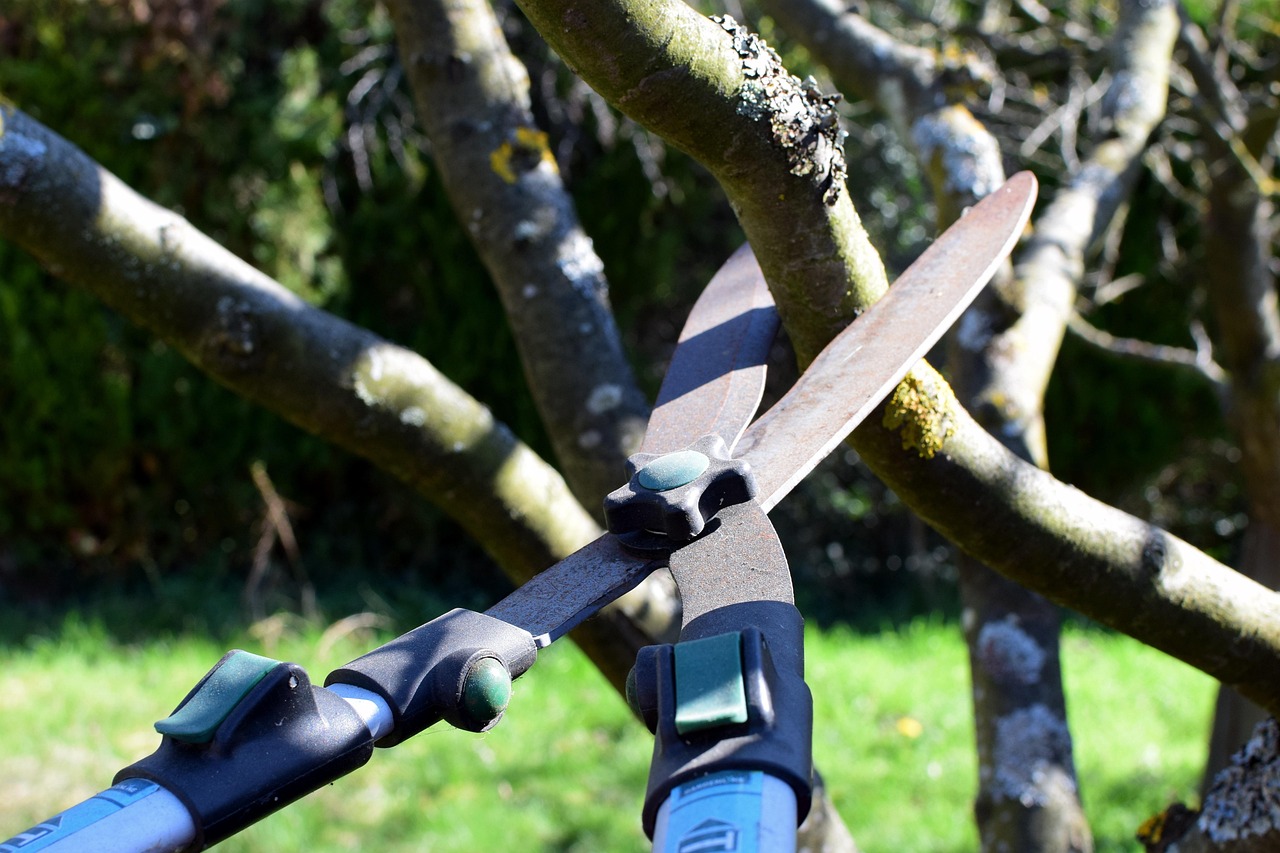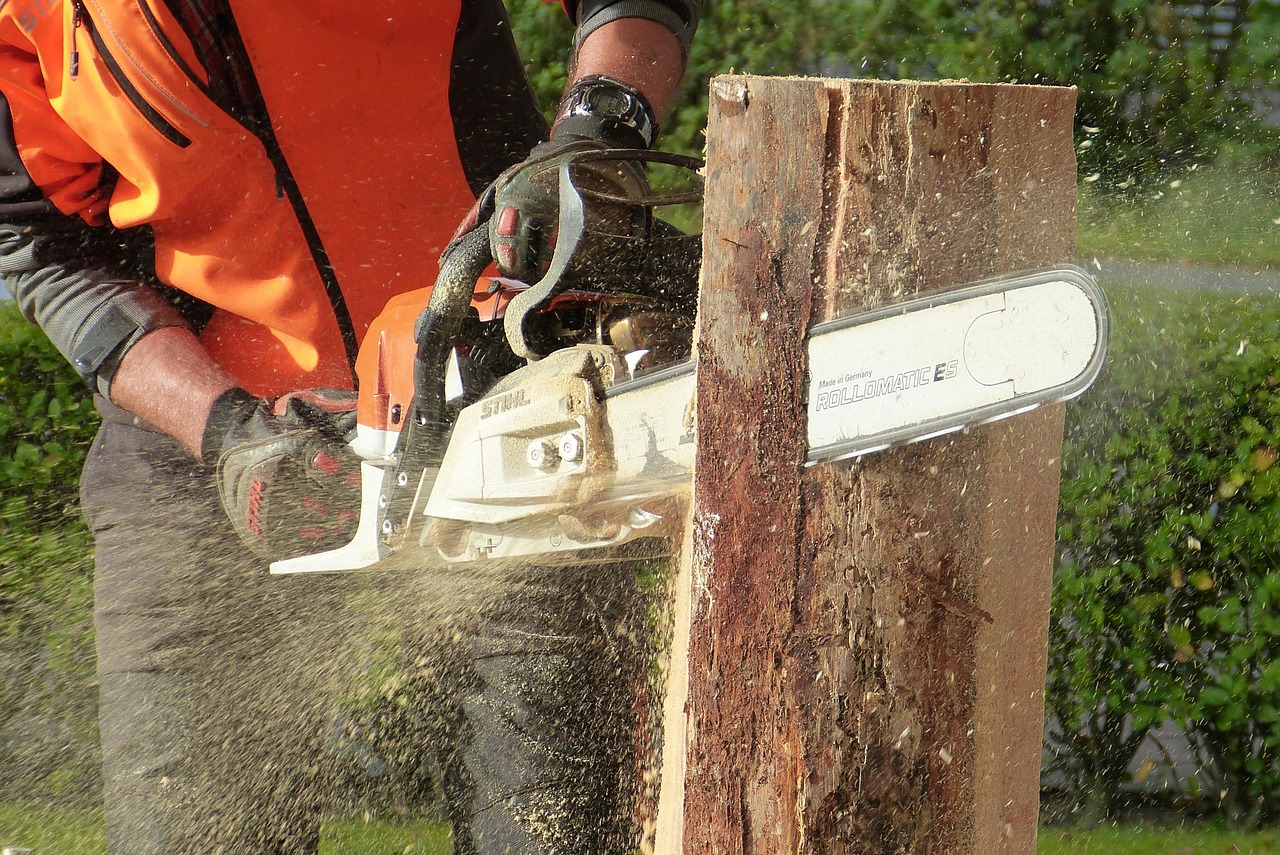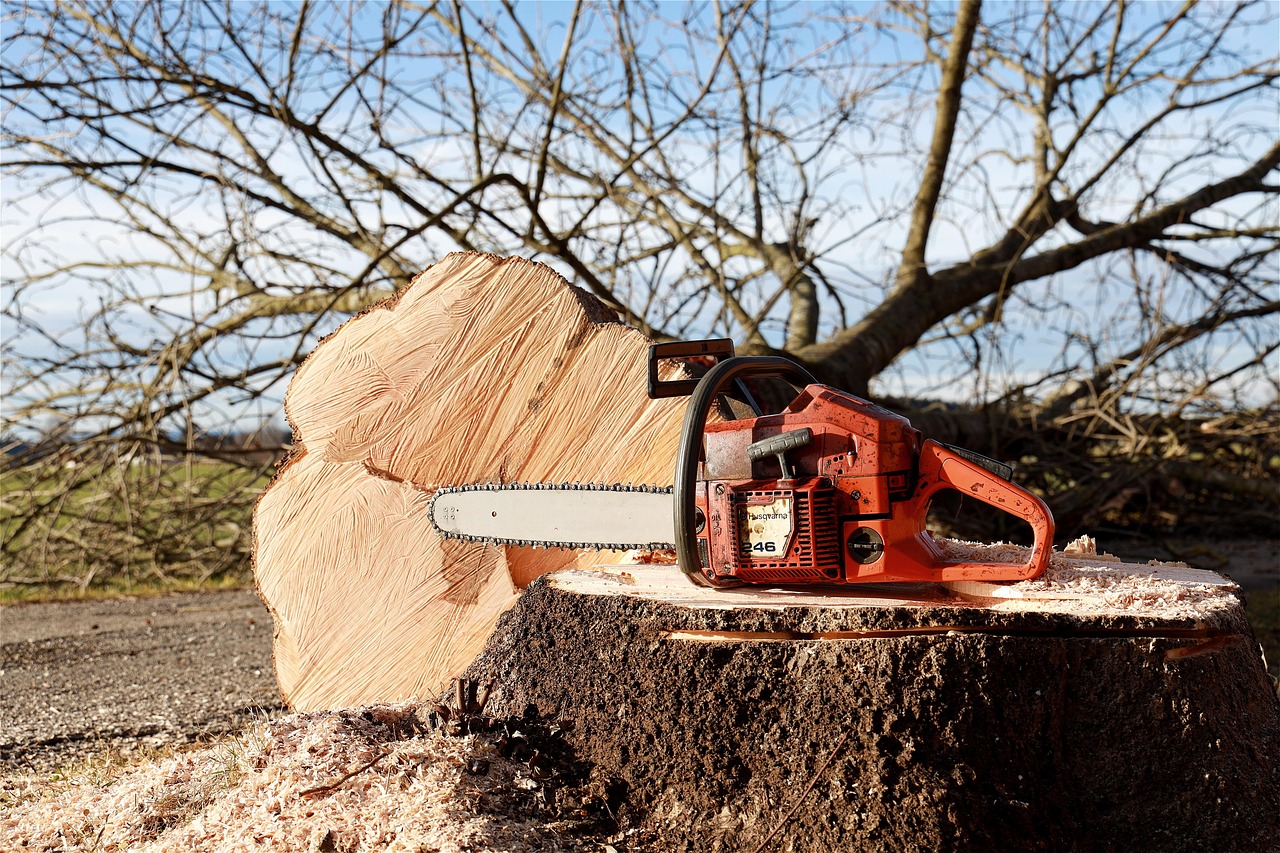Tree pruning is surrounded by many misconceptions. Common myths include beliefs that pruning is always harmful, that it should be done only in spring, and that topping trees is beneficial. Understanding the truth behind these myths is essential for healthy tree care.
Tree pruning is a fundamental practice in arboriculture. It involves the selective removal of specific parts of a tree, such as branches, buds, or roots. The primary goals of pruning include enhancing the tree’s health, improving its appearance, and ensuring safety by removing dead or weak branches. Given its importance, it is vital to address the popular myths that can mislead homeowners and tree care professionals alike.

Many people believe that pruning is detrimental to trees. This myth stems from a misunderstanding of the purpose and benefits of pruning. In reality, when performed correctly, pruning can encourage new growth, improve air circulation, and allow more sunlight to reach the tree’s interior. Proper pruning techniques can also help prevent diseases by removing infected or damaged branches.
Common Myths About Tree Pruning
Several myths about tree pruning persist in gardening and landscaping communities. These myths can lead to poor tree care practices and potentially harm the trees. Here are some of the most common misconceptions:
- Myth 1: Pruning is always harmful to trees. Many believe that any form of pruning will stress trees and lead to their decline. However, appropriate pruning can significantly benefit a tree’s health and longevity.
- Myth 2: Trees should only be pruned in spring. While spring is a common time for many trees to be pruned, certain species may benefit from pruning at different times of the year. For example, late winter is ideal for many deciduous trees.
- Myth 3: Topping trees is a good way to control their size. Topping, which involves cutting off large portions of the tree’s crown, can lead to numerous issues including decay and weak growth. It is not an advisable practice for managing tree height.
- Myth 4: All tree species require the same pruning technique. Different species have unique growth patterns and responses to pruning. It’s essential to understand the specific needs of each type of tree.
Debunking these myths is crucial for proper tree maintenance. A lack of understanding can lead to poor decisions that adversely affect tree health. Homeowners and landscapers should educate themselves about the best practices in tree care.

The timing of pruning can vary based on several factors including tree species, local climate, and specific purposes for pruning. Below is a table that outlines different types of trees and their recommended pruning times:
| Tree Type | Recommended Pruning Time |
|---|---|
| Deciduous Trees | Late Winter or Early Spring |
| Spring-Flowering Trees | Immediately After Flowering |
| Summer-Flowering Trees | Late Winter or Early Spring |
| Evergreen Trees | Late Spring or Early Summer |
Understanding when to prune each type of tree can lead to healthier growth and improved flowering or fruiting. Additionally, proper technique matters significantly in ensuring that trees thrive after pruning. Techniques such as thinning cuts and heading cuts should be applied appropriately based on the desired outcome.
The Importance of Proper Technique
Using proper techniques during pruning helps minimize stress on the tree. Thinning cuts remove entire branches back to the trunk or main branch, promoting better airflow and light penetration. Conversely, heading cuts shorten branches but can encourage excessive growth if not performed correctly. It is crucial for both professional arborists and amateur gardeners to learn the right methods.

Certain tools also play a significant role in effective pruning. Clean, sharp tools are necessary for making precise cuts that heal quickly. Dull or dirty tools can damage the tree and introduce diseases. Regular maintenance of pruning tools ensures optimal performance and safety during the pruning process.
With a deeper understanding of these common myths and essential practices, individuals can better care for their trees. Knowledge empowers homeowners and tree care professionals to make informed decisions that promote healthy growth and longevity in their landscapes.
Understanding the Benefits of Tree Pruning
Tree pruning offers numerous advantages that extend beyond aesthetics. Healthy trees can improve property values, enhance environmental quality, and provide shade and shelter. By understanding the specific benefits of pruning, homeowners and arborists can appreciate why proper techniques and timing are crucial.

Here are some key benefits of tree pruning:
- Promotes Healthy Growth: Regular pruning encourages the development of strong branches and a balanced structure.
- Increases Sunlight Penetration: Removing dense foliage allows sunlight to reach the inner parts of the tree, fostering healthier growth.
- Improves Air Circulation: Thinning out crowded branches helps improve airflow, reducing the risk of fungal diseases.
- Enhances Safety: Removing dead or weak branches reduces the risk of falling limbs, making the area safer for people and property.
- Encourages Flowering and Fruiting: Proper pruning techniques can enhance the quality and quantity of flowers and fruits in trees.
When to Prune Different Types of Trees
The timing of tree pruning varies depending on the species and the desired outcome. Understanding the best times to prune can lead to healthier trees. Here is a detailed overview:
Deciduous Trees
Deciduous trees typically shed their leaves in winter. The best time to prune these trees is during their dormant season, usually late winter or early spring. Pruning at this time minimizes stress and allows for optimal healing.
Evergreen Trees
Evergreen trees can be pruned in late spring or early summer. This timing helps avoid excessive sap loss and allows the tree to recover quickly. Care should be taken to avoid cutting too much foliage, as this can lead to stress.
Flowering Trees
The timing for pruning flowering trees depends on whether they bloom in spring or summer:
- Spring-Flowering Trees: These should be pruned immediately after flowering to avoid cutting off next year’s blooms.
- Summer-Flowering Trees: They benefit from pruning in late winter or early spring before new growth begins.
The Role of Seasonal Changes in Pruning
Seasonal changes significantly impact tree health and growth patterns. Understanding these changes can help guide effective pruning practices throughout the year. Here are some considerations for each season:
Winter
During winter, trees are dormant, making it an ideal time for pruning. The lack of leaves allows for easier visibility of branch structures. Additionally, the cold temperatures discourage pests and diseases.
Spring
Spring is a critical time for assessing tree health after winter dormancy. However, careful attention should be given to avoid pruning flowering trees too early. Pruning during this season can stimulate new growth but should be done cautiously.
Summer
Summer pruning can help control growth and improve light penetration. However, it is essential to monitor the health of the tree closely, as excessive pruning can result in stress during warmer months.
Fall
Pruning in fall is generally not recommended. This is because trees are preparing for winter dormancy, and cuts made during this time may not heal effectively, increasing susceptibility to disease.
Common Mistakes Made During Tree Pruning
Many individuals make mistakes when pruning trees that can have detrimental effects on their health. Here are some common errors to avoid:
- Pruning Too Much: Excessive pruning can lead to stress and hinder the tree’s ability to recover.
- Poor Timing: Pruning at the wrong time of year can disrupt growth patterns and lead to reduced health.
- Lack of Proper Tools: Using dull or inappropriate tools can damage branches and introduce pathogens.
- Topping Trees: As previously mentioned, topping can severely harm a tree’s health and structural integrity.
- Ineffective Cuts: Making improper cuts can lead to poor healing and increased vulnerability to diseases.
Avoiding these mistakes will enhance the effectiveness of pruning efforts and promote healthier trees in the landscape.
The Importance of Professional Help
While many homeowners attempt to prune their trees themselves, seeking professional help can often yield better results. Certified arborists have the knowledge and experience to assess tree health accurately and apply appropriate pruning techniques. Here are some reasons to consider hiring a professional:
- Expertise and Knowledge: Professionals understand tree biology and can make informed decisions about pruning practices.
- Safety Considerations: Climbing tall trees or using heavy equipment poses risks that trained arborists are equipped to handle.
- Proper Techniques: Arborists use correct methods that promote tree health and longevity, minimizing potential damage.
- Disease Management: Professionals can identify diseases early and recommend appropriate treatments alongside pruning.
Choosing to work with a certified arborist ensures that your trees receive the best care possible. This investment leads to healthier trees that enhance the beauty and safety of your landscape.
Pruning Techniques and Their Applications
Understanding the various pruning techniques is essential for maintaining healthy trees. Each method serves a specific purpose and can greatly influence the tree’s health and structure. Here are some common pruning techniques used by arborists and gardeners alike:
Thinning Cuts
Thinning cuts involve removing entire branches back to their point of origin. This technique helps to reduce the overall density of the tree’s canopy, allowing more light and air to penetrate. Thinning is particularly beneficial for:
- Encouraging Growth: By allowing more sunlight to reach the inner branches, thinning promotes healthy growth.
- Improving Airflow: Increased airflow reduces the risk of fungal diseases.
- Maintaining Natural Shape: Thinning helps preserve the tree’s natural shape while reducing weight on branches.
Heading Cuts
Heading cuts involve trimming back a branch to a bud or lateral branch, which can stimulate new growth. This technique is commonly used to:
- Control Size: Heading cuts can help manage the size of the tree, making it more suitable for residential areas.
- Encourage Bushier Growth: This technique can result in a bushier appearance, which may be desirable for certain types of trees and shrubs.
However, excessive heading cuts can lead to weak growth, so they should be used judiciously.
Reduction Cuts
Reduction cuts are similar to heading cuts but are specifically designed to reduce the size of a branch without compromising its integrity. This technique is ideal for:
- Maintaining Tree Health: Reduction cuts minimize stress while effectively controlling tree height.
- Avoiding Hazards: This method can help keep branches away from power lines or structures without damaging the overall structure of the tree.
The Importance of Proper Aftercare
After pruning, proper aftercare is vital to ensure the tree heals effectively. Here are some essential aftercare practices to consider:
- Watering: Provide adequate water, especially during dry spells, to help the tree recover from pruning stress.
- Avoiding Fertilizers: Refrain from fertilizing immediately after pruning. Allow the tree to naturally recover before introducing any nutrients.
- Monitoring for Pests and Diseases: Keep an eye on the tree for any signs of pests or diseases that may develop post-pruning.
Signs That a Tree Needs Pruning
Recognizing when a tree needs pruning is crucial for maintaining its health and appearance. Here are some signs to look out for:
- Dead or Dying Branches: These branches can be a safety hazard and should be removed promptly.
- Crowded Growth: When branches overlap excessively, thinning is necessary to improve light penetration and airflow.
- Pests or Disease Presence: If you notice signs of pests or diseases, targeted pruning can help contain the problem.
- Weak Structure: Trees with weak or unstable limbs may need pruning to prevent breakage.
Sustainable Practices in Tree Pruning
Sustainability is becoming increasingly important in all aspects of landscape management, including tree pruning. Implementing sustainable practices can ensure that trees not only survive but thrive in their environments. Here are some sustainable practices to consider:
- Minimal Intervention: Only prune when necessary. Frequent pruning can stress trees and disrupt their natural growth patterns.
- Using Natural Methods: Avoid chemical treatments and instead rely on natural remedies for pest control where possible.
- Recycling Branches: Instead of disposing of pruned branches, consider using them as mulch or compost material.
- Educating Others: Share knowledge about sustainable practices within your community to promote broader awareness and action.
The Role of Technology in Tree Care
Technology is playing an increasingly significant role in modern tree care. Advances in tools and techniques can enhance the effectiveness of pruning and overall tree health management. Some technologies currently being utilized include:
- Drones: Drones can provide aerial views of large trees or forests, allowing arborists to assess health from above without disturbing the environment.
- Sensors: Soil moisture and nutrient sensors can help determine when a tree needs water or nutrients, optimizing care schedules.
- Mobile Apps: Various apps assist homeowners in identifying tree species, assessing health, and scheduling pruning tasks.
The integration of technology into tree care practices enables more efficient management and promotes healthier urban forestry.
The Future of Tree Pruning Practices
The future of tree pruning is likely to continue evolving as new research emerges and environmental concerns grow. Emphasis on sustainability, technological advancements, and comprehensive education will shape how pruning practices develop. By staying informed and adapting to new methodologies, both homeowners and professionals can ensure that their trees thrive for generations to come.
Additional Considerations for Tree Pruning
Beyond the established techniques and benefits of tree pruning, there are additional considerations that can enhance the overall approach to tree care. Understanding these factors can further optimize the health and beauty of trees in any landscape.
Tree Species-Specific Needs
Different tree species have unique needs when it comes to pruning. It is essential to tailor pruning techniques to the specific characteristics of each species. Here are some considerations:
- Growth Patterns: Some trees, like willows, have fast growth rates and may need more frequent pruning, while slower-growing species like oaks might require less intervention.
- Flowering and Fruiting: The timing of pruning should be aligned with the flowering and fruiting cycles of the species to ensure optimal results.
- Resistance to Diseases: Some species are more susceptible to certain pests and diseases. Understanding these susceptibilities can guide pruning practices to mitigate risks.
Environmental Factors
The environment in which a tree grows can also influence pruning practices. Factors such as climate, soil quality, and surrounding vegetation impact tree health. Consider the following:
- Soil Quality: Healthy soil promotes better root development, which supports overall tree health. Consider soil testing to ensure optimal conditions.
- Climate Conditions: Local climate plays a role in tree growth patterns. For example, regions with high humidity may require more frequent monitoring for fungal diseases.
- Surrounding Vegetation: The presence of nearby plants can affect light availability and competition for resources. Pruning may be necessary to ensure that trees have adequate access to sunlight.
Community Involvement in Tree Care
Engaging the community in tree care initiatives can foster a deeper appreciation for urban forestry. Here are some ways communities can get involved:
- Tree Planting Events: Organizing community tree planting days can enhance local green spaces and promote awareness of tree care practices.
- Education Workshops: Hosting workshops on proper pruning techniques and tree maintenance can empower residents to take better care of their trees.
- Volunteer Programs: Establishing volunteer programs for tree maintenance encourages community participation and helps keep public spaces healthy and beautiful.
Final Thoughts
Tree pruning remains a vital practice in maintaining healthy landscapes, debunking myths that hinder proper care. Recognizing the importance of this practice allows homeowners and professionals alike to make informed decisions that promote tree health and longevity.
Understanding the benefits of pruning, the various techniques available, and the specific needs of different species is essential for optimal results. Moreover, incorporating technology, sustainable practices, and community involvement enhances the effectiveness of tree care initiatives.
As we embrace new methodologies and insights in tree care, it is crucial to remain open-minded and adaptable. By fostering a culture of education and awareness, we can ensure that our trees thrive, contributing to healthier urban environments for generations to come.
In conclusion, addressing popular myths about tree pruning not only improves individual practices but also elevates the collective understanding of tree care in our communities. With proper knowledge, tools, and techniques, we can nurture our trees to reach their full potential while enjoying the myriad benefits they provide.
